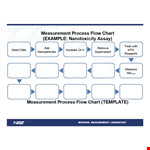Welcome to our comprehensive guide on nanotoxicity, where we delve into the fascinating world of assessing, measuring, and understanding the effects of nanoparticles. With the rising use of nanomaterials in various industries, it has become crucial to examine their potential toxicity and ensure the safety of human health and the environment.
Assaying nanotoxicity involves conducting rigorous experiments to determine the harmful effects of nanoparticles on biological systems. By utilizing advanced techniques and methodologies, researchers can uncover valuable insights into the mechanisms and risks associated with nanomaterials.
Measurement of nanotoxicity plays a vital role in evaluating the concentration, size, and behavior of nanoparticles. Accurate quantification allows us to assess the potential harm they may cause and implement necessary precautions and regulations to minimize any adverse effects.
Example studies highlighting nanotoxicity shed light on specific cases where nanoparticles have demonstrated harmful properties. These real-world scenarios help us understand the potential risks and develop strategies to mitigate them effectively.
Responding to nanotoxicity involves implementing appropriate safety measures and regulations based on the findings of assay and measurement studies. It is imperative to create guidelines and standards that ensure the responsible use of nanomaterials while protecting human health and the environment.
Stay tuned as we explore the intricacies of nanotoxicity, equipping you with the knowledge necessary to navigate this rapidly evolving field.
